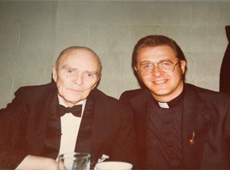IRA ceasefire 20 years on: Internal battles, peace talks, new hope
Posted By: July 21, 2017
By Brian Rowan Former BBC NI Security Editor. 20 July 2017
You can see conflict; hear it. It is much more difficult to see and hear the quiet, secret, work of peace-building.
It was the summer of 1997. The headlines had been of murder and marching season turmoil. Yet another dark tunnel.
The hope of the IRA ceasefire of 1994 had been buried in the rubble of the London Docklands bomb of 1996.
Three more names were added to that long list of lost lives, the dead of the often-described Troubles.
Then something changed.
The signal came in a statement from Sinn Féin president Gerry Adams about teatime on Friday, July 18, 1997.
Adams revealed that he and Martin McGuinness had urged the IRA leadership to restore the cessation of military operations first announced in August 1994.
I had just begun a summer break in County Donegal when I was called by a colleague at the BBC in Belfast.
He told me a jacket, shirt and tie would be waiting for me at BBC Radio Foyle.
Security sources I contacted almost immediately told me it was inconceivable that Adams would issue such a statement if he was not certain of a positive outcome.
Their assessment was that a ceasefire was imminent – this was confirmed by a Republican whom I spoke to several hours later.
To properly assess the Adams statement of July 1997, you have to understand the positions that both he and McGuinness held within the Republican leadership back then.
That was explained by a former Royal Ulster Constabulary (RUC) Chief Constable Sir Hugh Annesley in an interview with the BBC the previous summer.
“There is no doubt in my mind that, at the top, the Republican Movement – the Provisional IRA and Sinn Féin – are inextricably linked.
“So, I do not see this artificial distinction that’s been drawn.
“I believe Messrs Adams and McGuinness are very, very influential people and I think they have a major say in the conduct overall of the Republican thrust.”
A statement from the IRA leadership to Irish national broadcaster RTÉ in Dublin on Saturday morning 19 July 1997 confirmed the “unequivocal restoration of the ceasefire of August 1994” from midday the next day.
The political landscape had changed dramatically.
Tony Blair had won a landslide victory in May. There was a new Taoiseach in Dublin – Bertie Ahern – and peace talks were now being shaped without IRA arms decommissioning as a precondition.
A path was being cleared toward the Good Friday Agreement of April 1998, but Adams and McGuinness were fighting internal battles, including an attempt to oust their leadership within what the IRA calls a General Army Convention.
This was in October 1997.
The attempted coup failed, but there were resignations from the IRA and, within months, the first evidence of a dissident republican threat.
This was seen and heard in the explosions in Moira, Portadown, Banbridge and then in the Omagh bomb of August 1998 a period when that dissident threat – in terms of tempo and wherewithal – was at its most severe.
What then of the mainstream IRA? Did it completely dismantle – disappear in the developing peace?
Not according to Police Service of Northern Ireland Chief Constable George Hamilton and an assessment he gave after the murder of Kevin McGuigan in Belfast in August 2015, more than ten years after the IRA had moved from ceasefire to formally declare an end to its armed campaign.
He said that “the Provisional IRA does not exist for paramilitary purposes”.
But he added: “Nevertheless, we assess that in common with the majority of Northern Ireland paramilitary groups from the period of the conflict, some of the PIRA structure from the 1990s remains broadly in place, although its purpose has radically changed since this period.
“Our assessment indicates that a primary focus of the Provisional IRA is now promoting a peaceful, political Republican agenda.
“It is our assessment that the Provisional IRA is committed to following a political path and is no longer engaged in terrorism.”
A further assessment would reveal the continued existence of the IRA’s so-called Army Council.
20 years on
So, what has been learned between July 1997 and now?
That peace is not a moment or an event, but rather a long process.
In recent months, political threads became loose and unraveled.
The resignation of the late Martin McGuinness as deputy first minister in January this year brought about the collapse of the political institutions at Stormont, which have not yet been restored.
The dissident threat is still assessed as severe, but the security landscape has changed completely with the demilitarization of an army presence that once included tens of thousands of troops.
July 1997 was another beginning.
For all the darkness of that period, there was light at the end of the tunnel.
Brian Rowan is the author of Unfinished Peace and a former security editor at BBC News NI.










